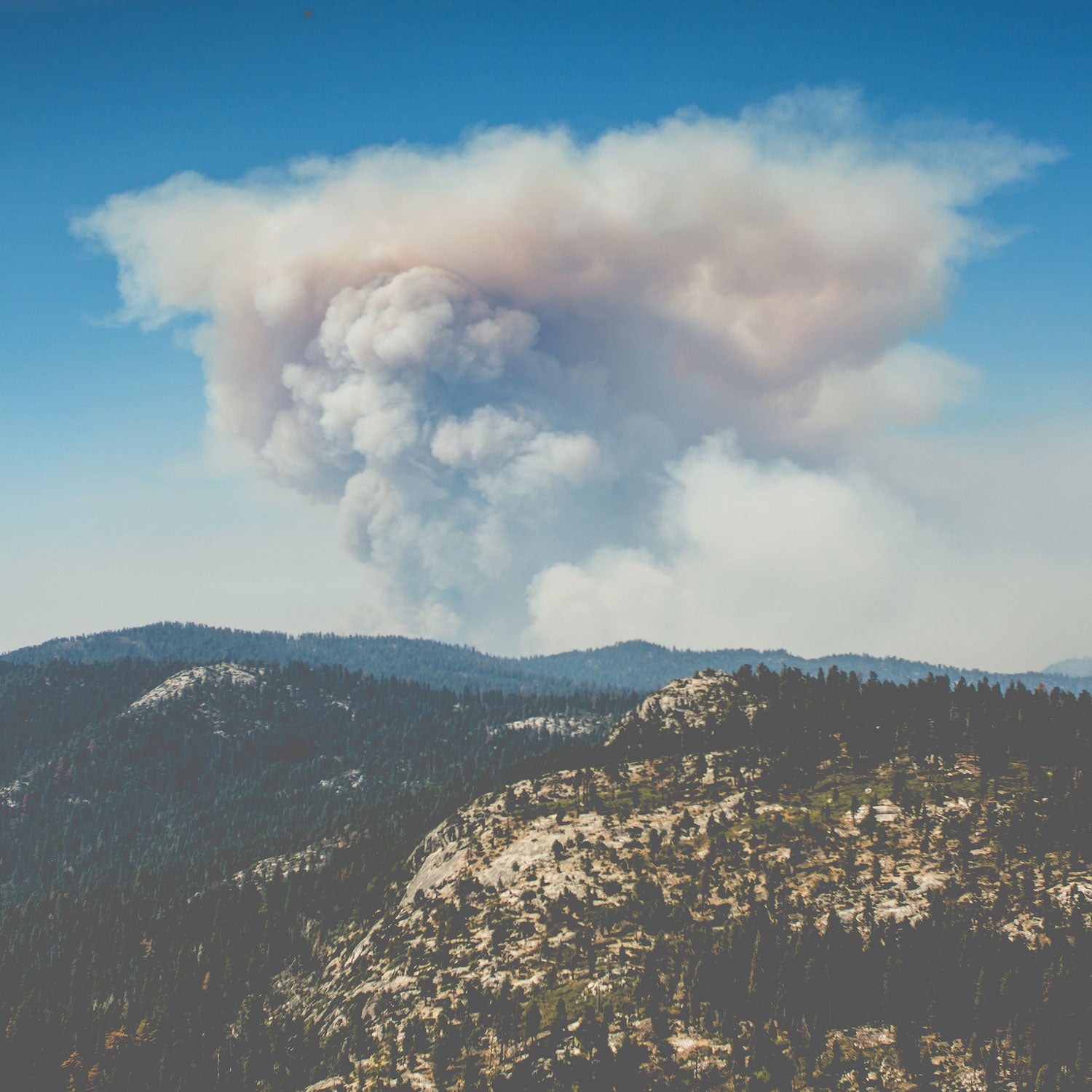Here’s another unsettling effect of climate change: many forests of the Rocky Mountains aren’t recovering after wildfires burn them. In some cases, the forests aren’t returning at all. That’s the by several researchers that appeared in the journal Ecology Letters in February. As the planet warms, the finding could be relevant to forests beyond the Rockies.
A lot of research has shown that climate change is causing larger-scale fires, says Camille Stevens-Rumann, a former wildland firefighter who’s now an assistant professor of fire ecology at Colorado State University. But Stevens-Rumann and her colleagues wondered how climate change affects forests after the burn.
To find the answer, the researchers gathered existing data from nearly 1,500 sites in temperate conifer forests that had been burned by 52 wildfires between 1988 and 2011. The sites ranged from central Colorado to the Canadian border, in Montana, and contained several kinds of forests—from dry ponderosa to cool, moist woods of subalpine fir and spruce at elevations as high as 9,000 feet. Then the researchers looked for larger patterns.
They found that forests aren’t bouncing back as they had in the past. “In this hotter and drier period that we have experienced since the start of the twenty-first century, we are seeing a reduction of tree regeneration” after fires, Stevens-Rumann told �����ԹϺ���. The percentage of sites where the same density of trees returned after a fire as had existed on the site before the blaze fell by nearly half—from 70 percent before 2000 to 46 percent after, the authors found. This reduced regeneration happened across all types of forest the researchers looked at, though more seedlings regrew in naturally moist-type forests than in naturally drier ones, the study found.
Tree regeneration is a sign of a forest’s resilience. While there’s always the possibility that trees could come back at some later time, Stevens-Rumann says, research has shown that the number of young trees that appear soon after a fire is a good indication of how well a forest will have repopulated an area several decades later.
Fewer trees after fire wasn’t the only change the scientists noticed. “We are seeing this increasing trend of areas that are not recovering at all,” Stevens-Rumann says. “In fact, about one-third of our sites didn’t have any tree regeneration, if they burned after 2000.”
“Why?” the scientists asked. In a phrase: Human-caused climate change.
Around the year 2000, warmer, drier conditions that once were unusual became more frequent, Stevens-Rumann says. Hot and droughty is tough on seedlings, which, like infants, are disproportionately stressed when things are bad. This climatic change seems to be a key driver in reducing forest regrowth, the authors wrote, though other factors may also be at work.
These changes reverberate beyond simply the appearance of the forest. They spell possible changes to animal habitat, for instance, and even the climate.
The Rocky Mountain forests of our children and grandchildren likely are going to look different than the ones we know now, Stevens-Rumann says. Some forests will regrow thinner after fire. In places, the composition of forests will shift to different species that better compete in the new environment.
In the places that will experience the most change, forests likely will disappear altogether, the authors said. “It’s the lower-elevation ranges that are going to drop out of being forests,” Stevens-Rumann says. Think: forests around Sedona and Flagstaff in Arizona; at lower elevations on the Front Range of Colorado; and the forested areas around Boise. Shrublands or grasslands will replace them, she says.
While the study’s 23-year look is short, Stevens-Rumann acknowledged, the trend was unmistakable. “Just in my lifetime, it tells me that there’s a change in how trees are coming back.”
These changes reverberate beyond simply the appearance of the forest. They spell possible changes to animal habitat, for instance, and even the climate. “If we see large-scale transitions from forest to grasslands or shrublands, we’re going to lose a lot of that potential to sequester carbon,” Stevens-Rumann says. In theory, that could further exacerbate climate change, though such feedback loops “are complicated,” says Nate McDowell, a staff scientist who works for Pacific Northwest National Laboratory.
“Their punchline is consistent with many, many other studies that are finding that warming is having a negative effect on forests,” says McDowell, who was the lead author of a that predicted that a warming climate likely will help spur “massive” die-off of cone-bearing trees such as junipers and pinyon pines in the Southwest later this century.
Stevens-Rumann says news of such changes can be jarring for people (“We have a lot of innate love for trees”), but she cautioned against misreading the study as spelling the end of these forests entirely. “My mom said, ‘I guess we’ll have to say good bye to all the trees.” “I said, ‘No, we’ll just have to say, ‘See you on up the mountain.’ We’re not losing all the forests. But there is a possibility that we will lose some.”
Some actions can help ease the coming changes. Prescriptive burning improves forest health and give forests a fighting chance to survive, Stevens-Rumann says. Changing the way agencies such as the Forest Service revegetate after fire is also needed. In some cases, agencies are using guidelines that are 30 or 40 years old and don’t take climate change into account, she says.
One scientist has suggested that the relatively sudden change from forests to grass and shrublands won’t be pretty—large swaths of the landscape may become a “weed world.” So where change is coming, land managers need to work hard to help the land “to become healthy ecosystems of a different kind,” says Stevens-Rumann—for instance, to ensure that a grassland is not overtaken by invasive, fire-prone cheatgrass.


